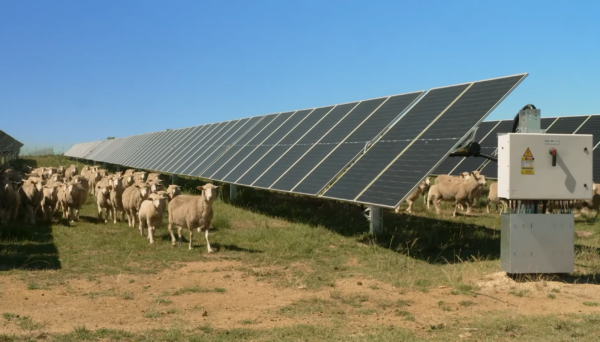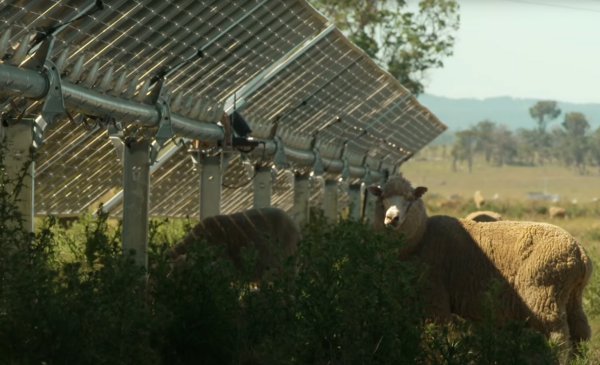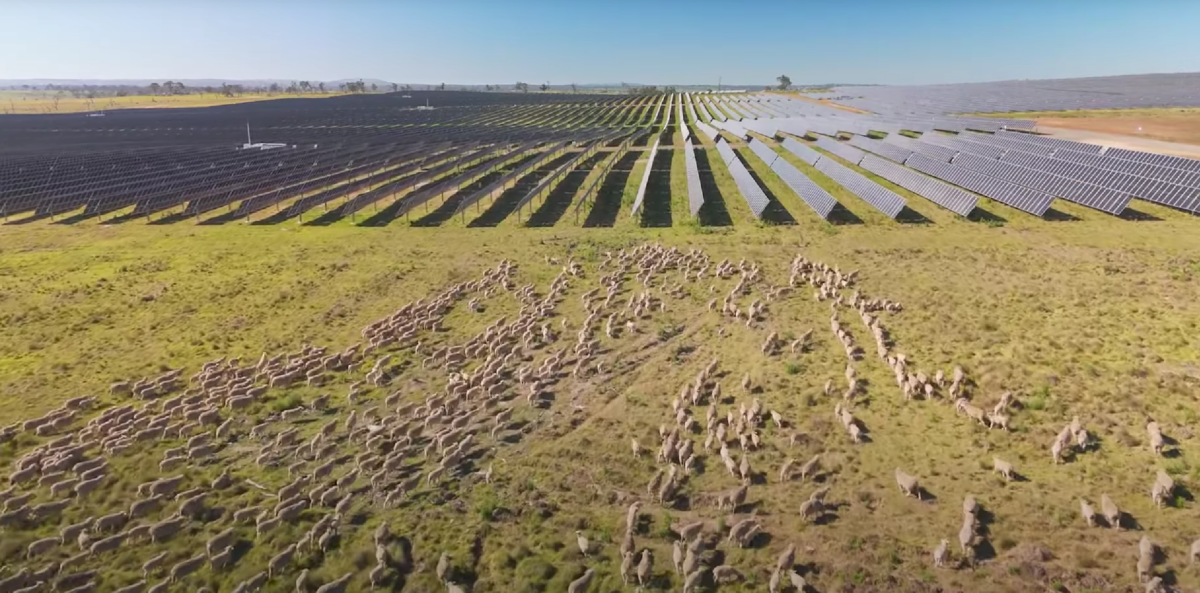On 2,000 hectares of grazing land near Uralla in northern New South Wales (NSW), a mob of more than 6,000 merino and cross-breed sheep forage for six weeks at a time under the approximately 1 million panels deployed as part of the 400 MW first stage of Acen Australia’s New England solar farm.
One of the largest operating solar generators in Australia, the initial stage of the project commenced exporting to the grid at the same time the first of the sheep were introduced to the site in December 2023. Since then, extra sheep have introduced gradually, to help them transition to their new feeding ground.
Every six weeks the sheep are mustered to sheds for health checks or vaccinations and returned to other paddocks or back to the green solar pastures to coexist in their renewable energy environment.

Image: ACEN Australia
Richard Munsie, who is one of the landholders running sheep on the solar farm site, said while it will take a few seasons to properly assess the full benefits of running the sheep around the panels, the early signs are positive.
Munsie said the panels create their own microclimate, which is an ideal environment for the sheep.
“They shade the early morning pastures which prolongs the effects of the dew. That helps the grass grow. And the panels also give shade to sheep and protection from frosts,” he said.
“We might even be able to run more sheep due to the climate created by the panels, but we’ll see.”
Fellow landholder Cameron Wood said the solar panels have helped drought proof his operation.
“The fresh grass and shade are a great combination,” he said. “We’re looking forward to getting [the sheep] in the sheds this winter for shearing, and their wool baled up for market.”

Image: ACEN Australia
Acen said assessments of the agrivoltaic project will continue over several seasons to review benefits of running sheep on the site but noted that previous solar grazing trials in western NSW have demonstrated an increase in carrying capacity and wool quality.
Work on the second stage of the New England Solar Farm, a 320 MW / 200 MWh 2-hour BESS is expected to begin later this year.
This content is protected by copyright and may not be reused. If you want to cooperate with us and would like to reuse some of our content, please contact: editors@pv-magazine.com.








2 comments
By submitting this form you agree to pv magazine using your data for the purposes of publishing your comment.
Your personal data will only be disclosed or otherwise transmitted to third parties for the purposes of spam filtering or if this is necessary for technical maintenance of the website. Any other transfer to third parties will not take place unless this is justified on the basis of applicable data protection regulations or if pv magazine is legally obliged to do so.
You may revoke this consent at any time with effect for the future, in which case your personal data will be deleted immediately. Otherwise, your data will be deleted if pv magazine has processed your request or the purpose of data storage is fulfilled.
Further information on data privacy can be found in our Data Protection Policy.